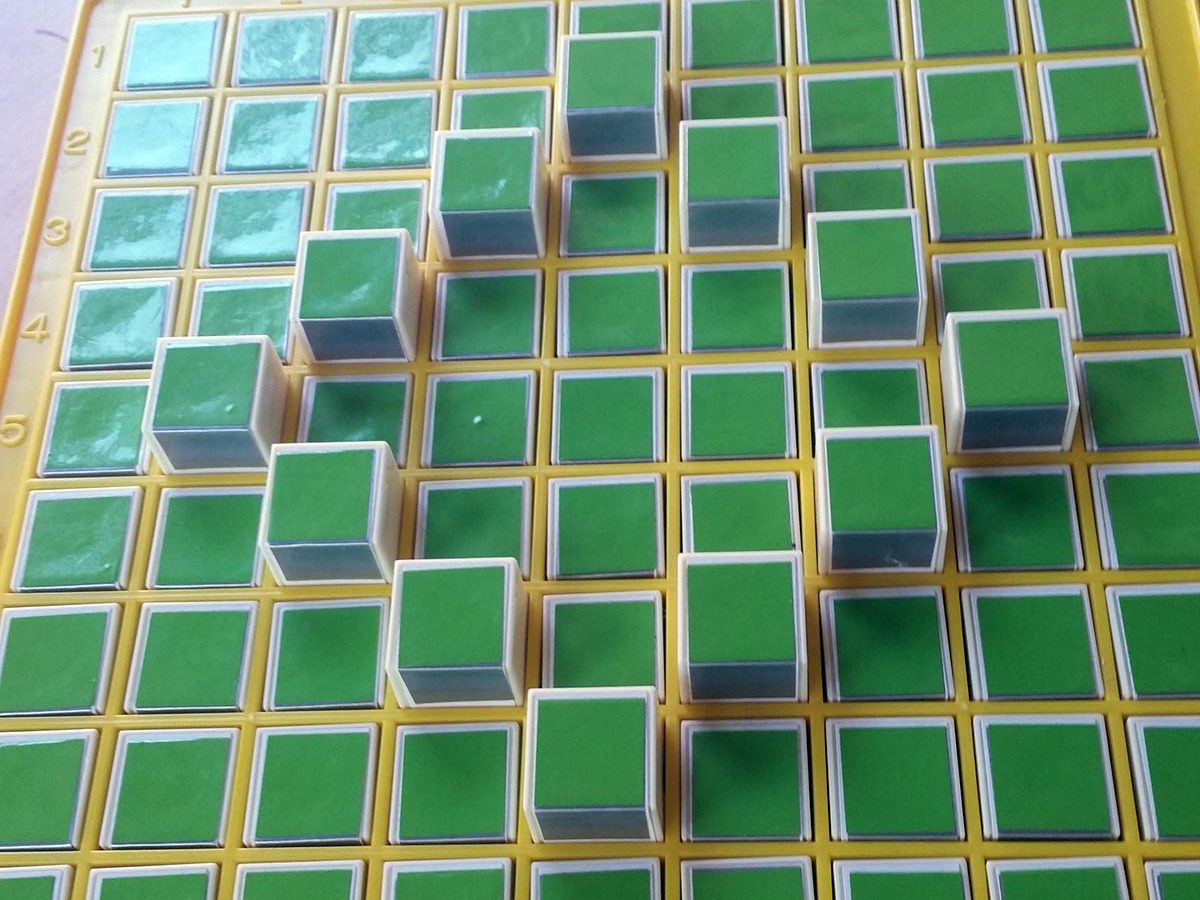I had an opportunity to play math with children and parents at a local elementary school last night. (Shoutout to Oak Ridge Elementary! Thanks for hosting!) The Pattern Machines were a big hit.
One seven-year old spent some time deciding what to make and a couple of minutes idly punching buttons before she got down to work. In a short time, she declared she had made a square and presented it for my approval.
I noticed her square, as this seemed important to her, and I told her it gave me an idea. On my own Pattern Machine (leaving hers untouched—an important tenet of this work is never to take the pencil out of the child’s hand!), I made the thing below and asked her whether I too had made a square.
“No. That’s a diamond,” she declared.
I rotated my Pattern Machine 45°.
“Now?” I asked.
“Now it’s a square.” she said with a knowing look.
Diamond also came up when I talked with children and adults about a page in Which One Doesn’t Belong?
I used to think that diamond was a lazy term for rhombus, but it is not. Diamond has a stable and robust meaning that is different from rhombus. On that Which One Doesn’t Belong? page, the upper right and the lower left shapes are diamonds. The lower right is not, yet each of these three is a rhombus.
Also sometimes a pentagon is a diamond.
So I propose we treat diamonds as we do other mathematical objects.
Let’s build rock solid definitions of them—definitions that we can take as shared and use to sort diamonds from not-diamonds.
Let’s investigate the consequences of those definitions.
Let’s investigate conjectures and prove theorems.
Together, let’s build a rich field of mathematical inquiry.
I’ll start us off. Some diamonds can be cut into smaller diamonds, as in the example below. Can ALL diamonds be cut into smaller diamonds? If not, which ones can and which ones cannot?

You said “rock solid”…I love a good pun! And I love that this a great way to talk with kids about mathematical definitions and what makes a good one. It’s like being a mathematical lawyer. Rock solid. Air tight.
There there is definitely some substantial and important meaning for young children in the concept of “diamond” as distinct from the concept of “square.” Thank you for sharing your thinking here.
– Elizabeth (@cheesemonkeysf)
Does anyone think that it is a rotated square? You can find the area of the diamond equal to the square, right? They are congruent, not just similar.
I’m just thinking about it.
Rotations are a valid thing in mathematics and I would call it a rotated square.
One observation I have made is that children will almost always play with something before they do what adults call”productive work”. They need free playtime. You call it idlely punching, which makes me wonder what you expected her to do. She was thinking and enjoying the toy is my guess.
Anyway, she did make a good point. And your square was different from her square.